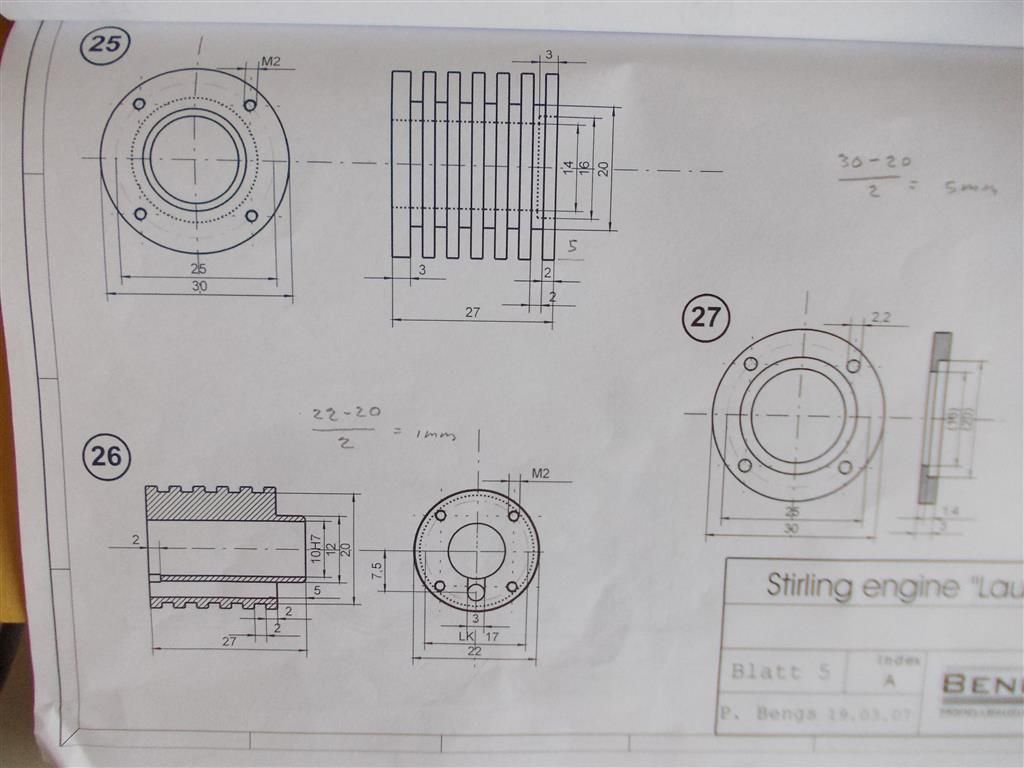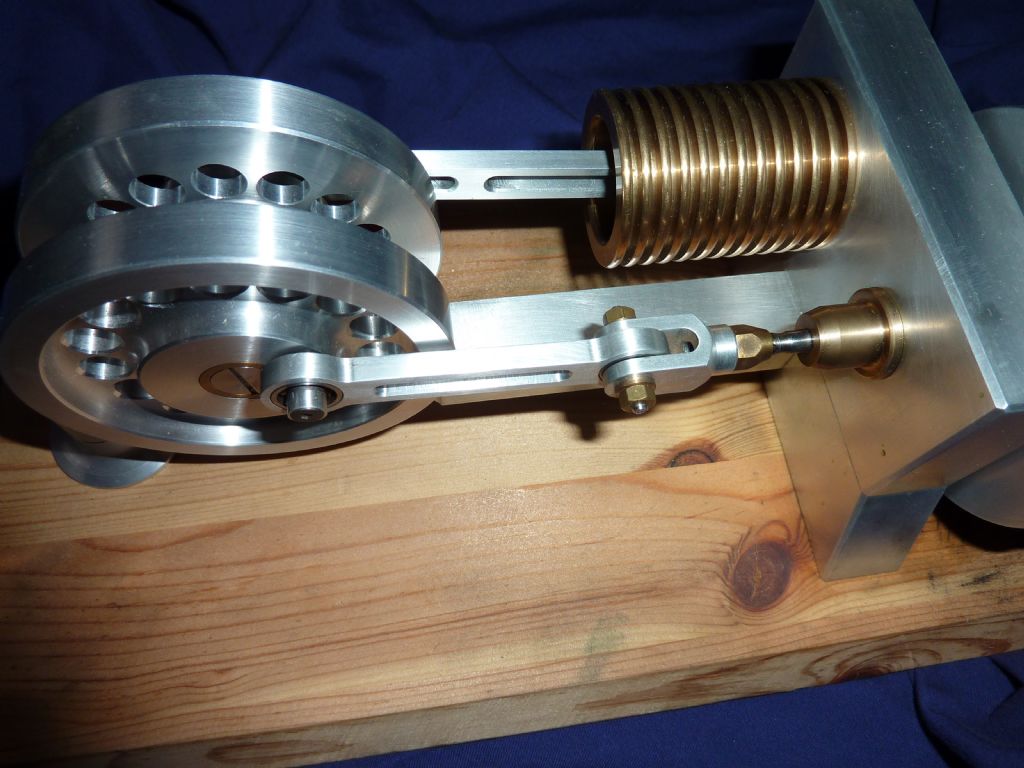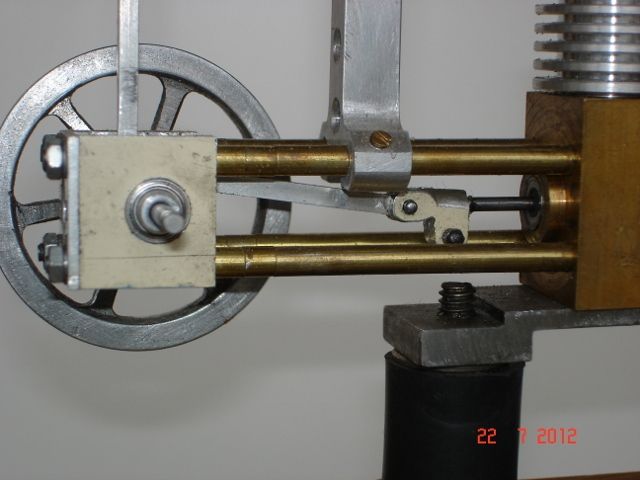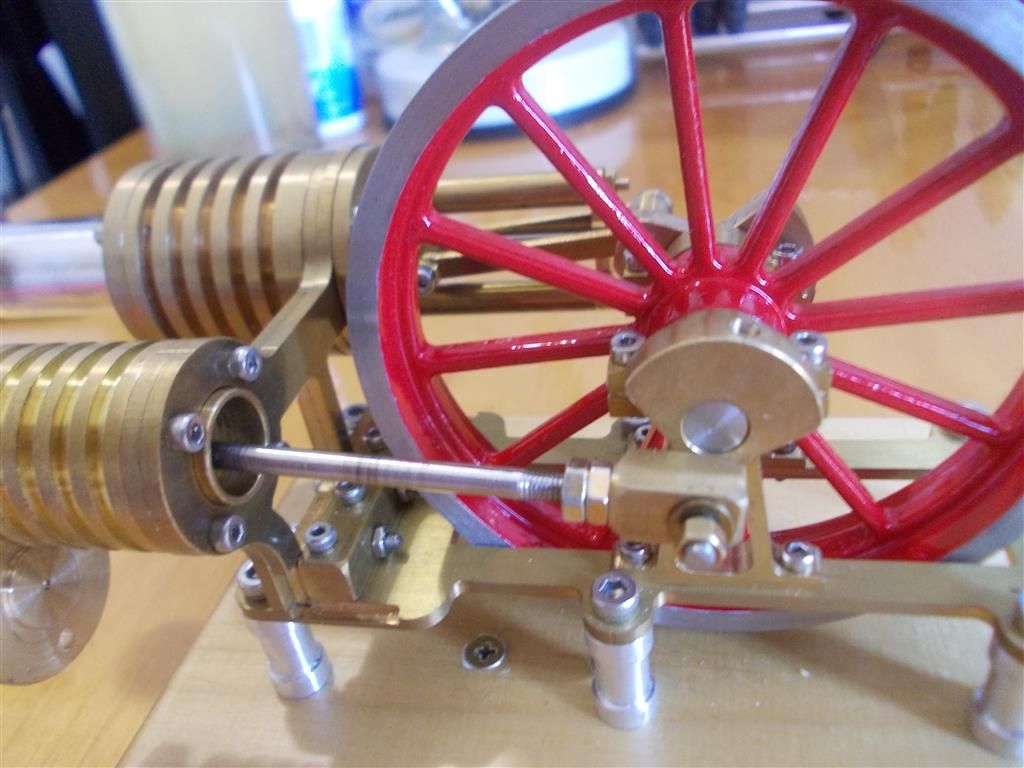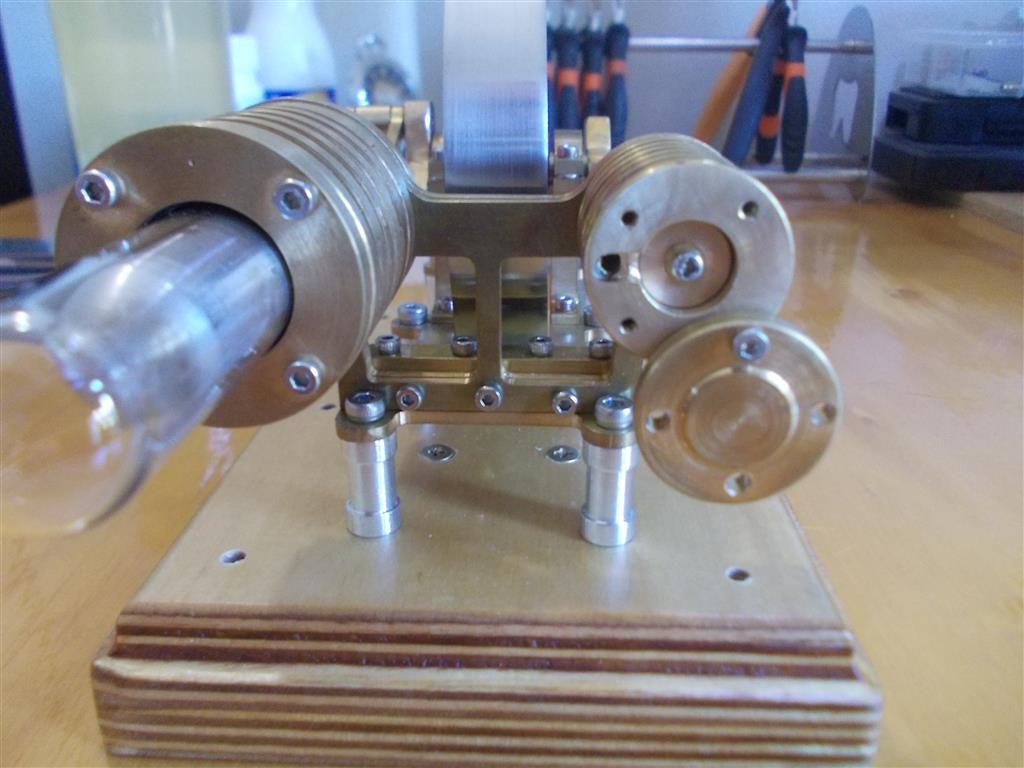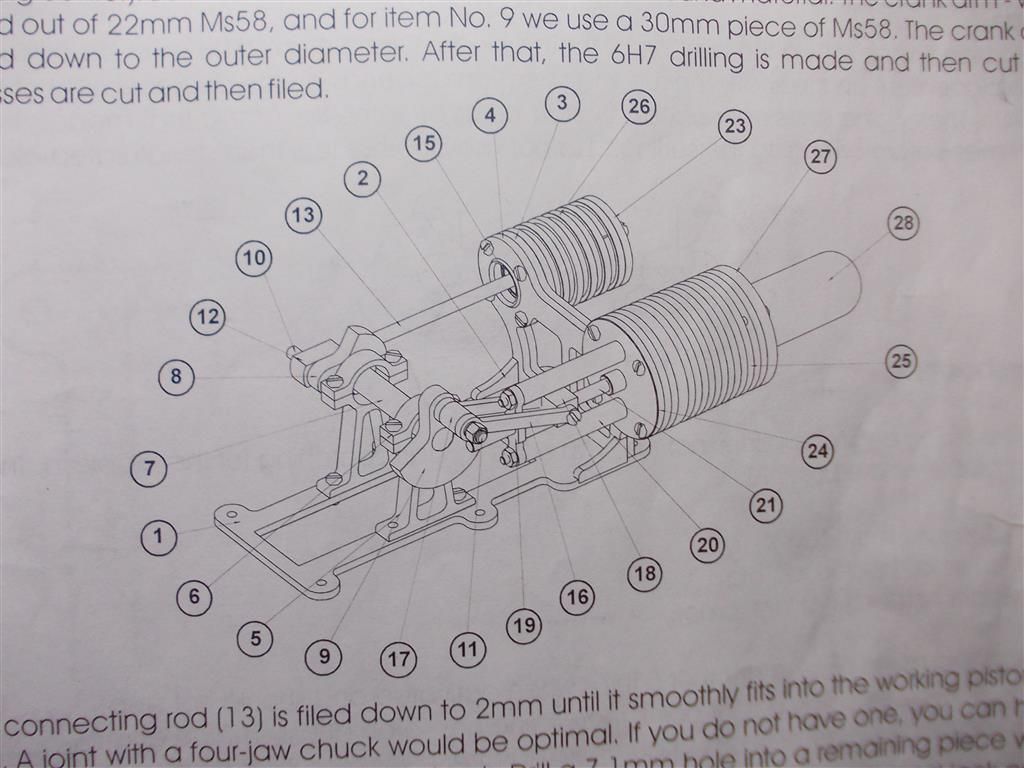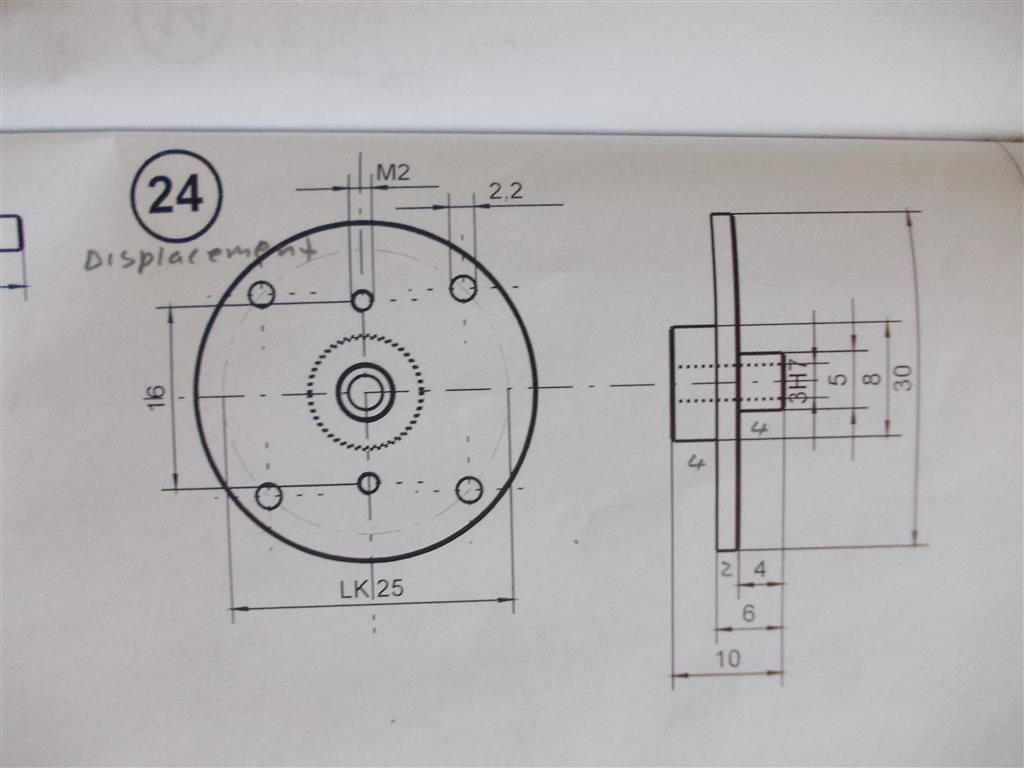I used a 2mm drill bit in my bench drill as a milling machine to connect the hole to the main bore of the work cylinder. The engine runs much more freely now as the work piston is not just compressing air. When I spin it by hand it turns for about eight revolutions which I think is about as good as it gets. I like the improved linkage idea as outlined above and I will try that eventually but I do not think that friction is my problem now ; there is something else wrong and I am not sure what.
You can see the adjustment mechanism in photo #1 I made for the work piston connecting rod. This allows me to adjust the length and get the piston close to the cylinder head at TDC. Photo #2 shows the port outlet I made today and the piston at TDC…does this look about right ? I can't get it any closer to the cylinder head without it touching.
The work piston at TDC is just touching the newly enlarged port.
Very frustrating as it still will not run ! I get the feeling that it wants to. When heat is applied to the glass tube then the engine will turn over for about ten revolutions so something is happening. I tried to adjust the timing as I would a steam engine by advancing and delaying the crank slightly but this did not help….I did not really expect that it would but at this point I will try anything.
Points to consider :
1. The temperature here is very hot so maybe I cannot get a good temperature differential between the two cylinders ?
2. That hole down the side of the work cylinder may not be large enough or close enough to the bore to perform its required function ; I was worried about bursting through when I drilled it. As others have said, for a long hole like that it is best to just go straight to a 3mm drill bit rather than drilling pilot holes with smaller drills which will deflect. I may have to remake that cylinder again as it is not possible to enlarge that hole : the drill bit just wanders and follows the existing hole and would burst through the outer surface.
3. The heat transfers through the cylinder holders and the frame quite easily from the Displacement cylinder to the work cylinder. I assume that Bengs design does work and this is not the cause of my problem but what else could they have made the main frame and cylinder holders out of to reduce this heat transfer ?
4. I am tempted to make some gaskets for the cylinder covers as I would for a steam engine….a waste of time perhaps ?
5. What a bugger of a thing… it looks good though 


Edited By Brian John on 14/02/2016 06:33:18
Edited By Brian John on 14/02/2016 06:38:54
Edited By Brian John on 14/02/2016 06:39:14
Edited By Brian John on 14/02/2016 06:40:02
Edited By Brian John on 14/02/2016 06:42:17
Edited By Brian John on 14/02/2016 06:44:12
Edited By Brian John on 14/02/2016 06:45:07
Edited By Brian John on 14/02/2016 06:45:40
Gordon Tarling.


